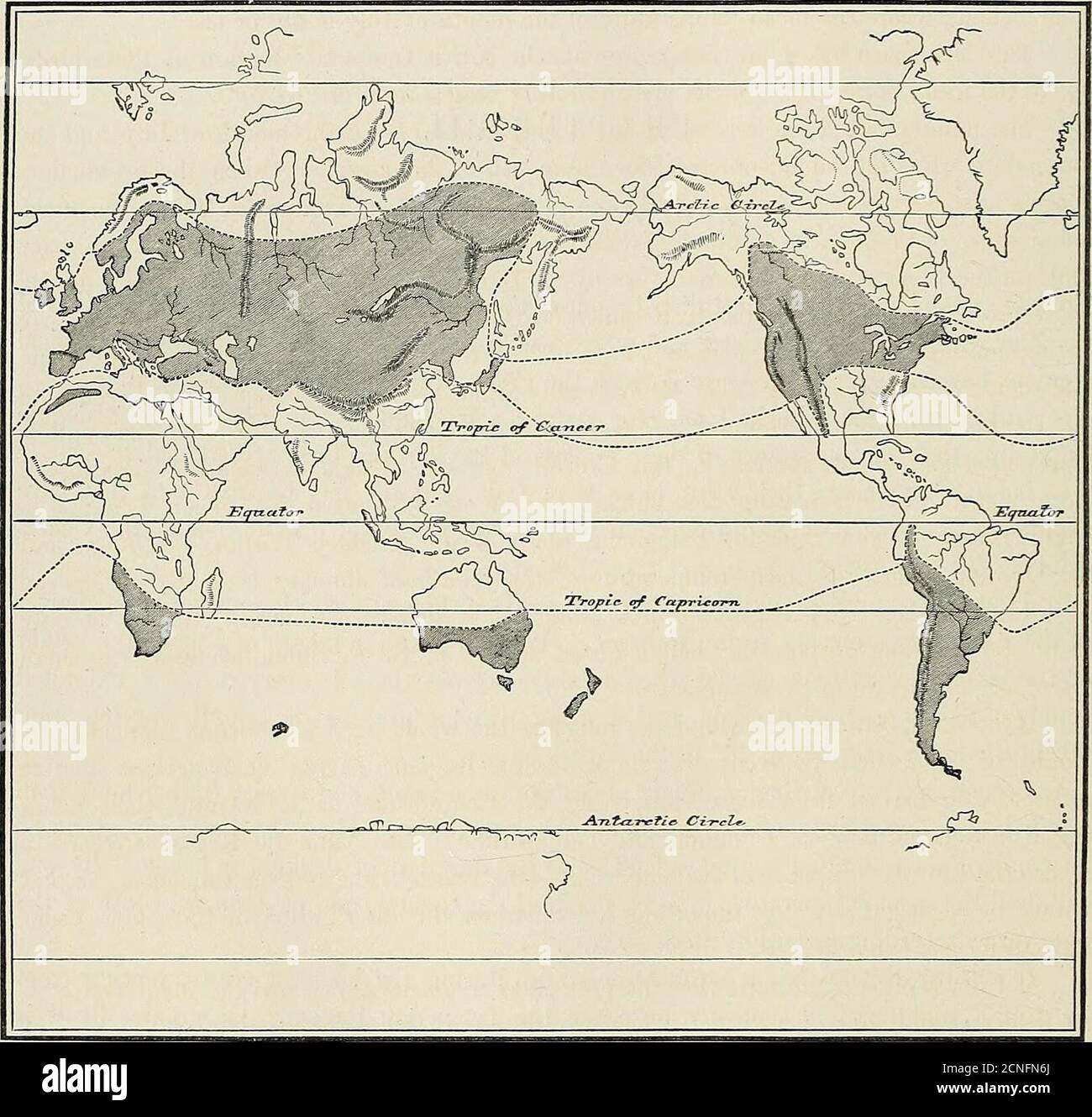. The geographical distribution of the family Charadriidae, or the plovers, sandpipers, snipes, and their allies . into two subregions by the Tropical Region, the limit of the north Temperate Regionbeing decided by the isothermals of July, and those of the south Temperate Region by theisothermals of January. The boundaries of these Regions are deflected from the longitudinal parallels byoceanic currents and other causes. The Gulf-stream, which raises the January isothermalof 32° from the Black Sea almost to the latitude of the North Cape in the Atlantic, hasexactly the contrary effect in summe

Image details
Contributor:
Reading Room 2020 / Alamy Stock PhotoImage ID:
2CNFN6JFile size:
7.1 MB (387.2 KB Compressed download)Releases:
Model - no | Property - noDo I need a release?Dimensions:
1618 x 1544 px | 27.4 x 26.1 cm | 10.8 x 10.3 inches | 150dpiMore information:
This image could have imperfections as it’s either historical or reportage.
. The geographical distribution of the family Charadriidae, or the plovers, sandpipers, snipes, and their allies . into two subregions by the Tropical Region, the limit of the north Temperate Regionbeing decided by the isothermals of July, and those of the south Temperate Region by theisothermals of January. The boundaries of these Regions are deflected from the longitudinal parallels byoceanic currents and other causes. The Gulf-stream, which raises the January isothermalof 32° from the Black Sea almost to the latitude of the North Cape in the Atlantic, hasexactly the contrary effect in summer, depressing the July isothermal of 60° from the White i2 ZoologicalRegions ofthe Chara-driidae. ArcticKegion. TropicalRegion. TemperateRegion. 60 ZOOLOGICAL REGIONS. Sea to the latitude of Edinburgh in the British Islands. On the Pacific coast of Asia theJuly isothermal of G0° is depressed still further south, almost to the latitude of the Pyrenees, apparently by the cold stored in the nearly land-locked Sea of Okhotsk. In South Africa the isothermal of 77° is raised towards the equator on the west coast. by a cold current from the Antarctic Ocean, but is depressed down to the tropic of Capricornon the east coast by the warm Mozambique current, though the effect of the latter isdiminished inland by the rapid rise of the Drakenberg Range. In South America somewhat similar causes produce the same effect. Humboldtscurrent raises the isothermals on the coasts of Chili and Peru, its effects being increasedinland by the rapid rise of the Andes. ZOOLOGICAL EEGIONS. 61 The result of these causes is that the locality on the west coasts of South Africa andSouth America where the mean temperature of July is 77° is more than a thousand milesfurther north than it is on the east coasts of the two continents. In the annexed map the upper dotted line represents the isothermal of 60° for themonth of July ; the white space above it consequently represents the Arctic Region of theCharadrii